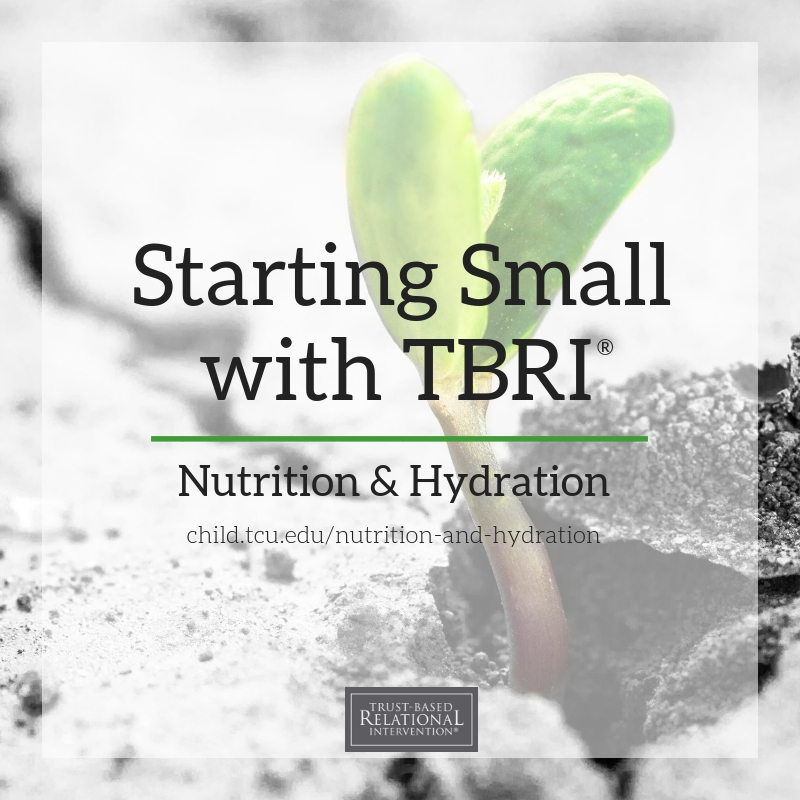
by: Amanda Purvis
One simple way to start implementing Trust-based Relational Intervention is to empower your child’s body by meeting physical needs. Nutrition and hydration play key factors in a child’s ability to regulate, and we can help set them up for success by making sure they eating and drinking enough.
Nutrition
Many children who come from hard places have experienced hunger or food insecurity. First, let’s establish that food issues are complex and should be addressed with a medical professional who is knowledgeable about complex developmental trauma. That said, most children benefit greatly from having healthy snacks available throughout the day. A good rule of thumb is to offer a snack every two hours to support blood sugar and increase felt-safety. Here are some ideas for implementing snacks:
- Take a special trip to the store to choose healthy snacks
- Assemble a basket of non-perishable foods such as packaged nuts, fruit leather, or crackers. Put the basket somewhere that everyone can access it.
- Build snack times into the day. These can also serve as transitions from one activity to the next and can be a connecting time for you and your child.
Hydration
Did you know that by the time we feel thirsty we have lost 10% of our brain’s capacity to function, and some of our excitatory neurotransmitters have spiked? For our kiddos who often teeter on the edge of balanced neurochemistry, dehydration can greatly impact their ability to regulate. So how do we get our kids to drink more water? Here are a few ideas:
- Take them to the store to pick out their own special water bottle or cup with a straw.
- Always lead by example. If you want a big cup of coffee in the morning, tell your child, “I want a big cup of coffee, so I am going to drink this big cup of water while it brews!” then ask them if they want milk or juice with breakfast, and then give them both a cup of water and a cup of their milk or juice, and encourage them to drink their water first. You could even make it into a game and race who can drink their water the fastest.
- Add a flavor to their water to make it more appealing. An edible essential oil such as lemon or orange, slices of fruit, or even an edible a flower make drinking water more fun.
- Let them set a goal of ounces and help them keep track. Celebrate lavishly when they meet their goal.
- Always make sure everyone brings a water bottle when you leave the house.
- Make a hydration chart for the restrooms in your home. A simple web search of “hydration chart for urine” will provide many examples. While it may seem a little graphic or juvenile, the visual representation of urine from a body that is hydrated vs. dehydrated really resonates with the children we serve.
While they may seem like small changes, proactively focusing on nutrition and hydration can greatly impact your child’s felt-safety and ability to regulate.
More resources on nutrition and hydration:
- Trust-Based Parenting, Chapter 3
- Children From Hard Places & The Brain, Chapter 5
- The Connected Child, Chapter 10
I have really enjoyed learning about TBRI, Thank you!!